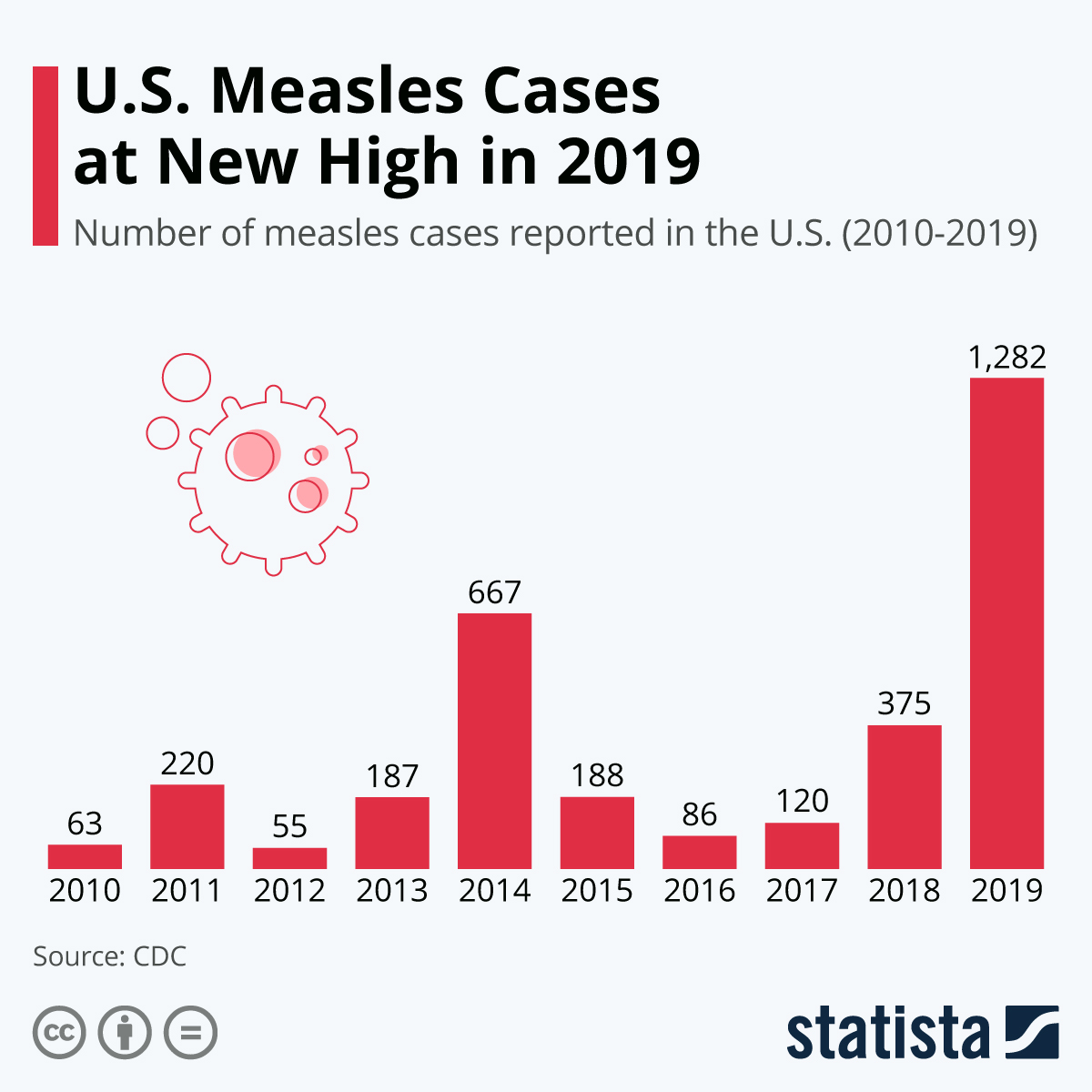With nearly 1,300 cases in 2019, measles are at a 27-year high in the U.S., according to new CDC numbers. In the year 2000, the disease was declared eradicated in the United States but the country could now go on to lose that status. 73 percent of the 2019 cases were linked to outbreaks in New York where different communities, among them Orthodox Jews, are often unvaccinated. Other U.S. communities where vaccination rates are falling also experienced outbreaks in 2019.
In 2014, measles numbers spiked as well, if not as bad as in the most recent year on record. Then, an Amish missionary who visited the Philippines caused nearly half of the registered cases in a mostly unvaccinated Amish community in Ohio. Another significant outbreak at Disneyland in California that same year pushed the number of cases up even more.
Globally, measles declined between 2000 and 2016. The UN announced the War on Measles in 2001, with huge support from the U.S. federal government, the American Red Cross, and donors like Ted Turner and Bill and Melinda Gates. The funding went mostly towards providing training, resources, and logistic planning needed to administer the two-part vaccine that protects against measles, mumps, and rubella (MMR). Most recently, vaccination rates have also been falling around the world, causing an uptick in measles deaths.
The WHO determined that the biggest factor for the increase in measles cases worldwide was gaps in vaccination coverage mainly caused by poverty. The medical infrastructure in many countries is not built up enough to vaccinate children year after year to prevent the virus. Furthermore, anti-vaccine activists, false rumors distrust in medical companies have created an atmosphere of distrust around the vaccine in the U.S. and globally.





















